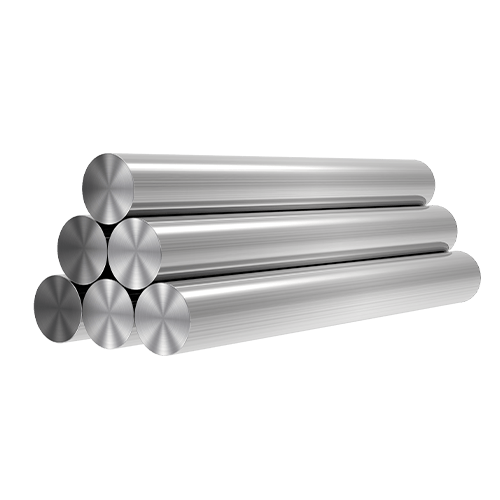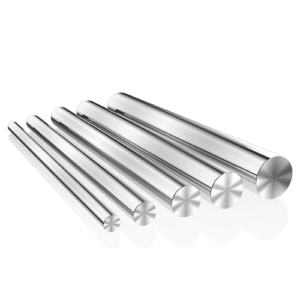Introduction

Stainless steel rods are versatile components used across a wide range of industries due to their strength, durability, and corrosion resistance. These rods come in various sizes, each suited to specific applications. Understanding the common stainless steel rod sizes and their industrial uses is crucial for selecting the right material for any project. This blog post will explore different stainless steel rod sizes, their properties, and the industries where they are commonly used. By the end, you’ll have a comprehensive understanding of how to choose the appropriate stainless steel rod sizes for your needs.
Overview of Stainless Steel Rods
What Are Stainless Steel Rods?
Stainless steel rods are cylindrical bars made from stainless steel, known for their resistance to rust and corrosion. They are used in various applications, including construction, manufacturing, and repair. Stainless steel rods come in multiple sizes and grades, each offering different mechanical and chemical properties.
Stainless Steel Grades
- Grade 304: Known for its excellent corrosion resistance and good mechanical properties. It is commonly used in kitchen equipment, piping, and structural applications.
- Grade 316: Offers superior resistance to corrosion and is ideal for marine environments and chemical processing. It is often used in high-saline and acidic environments.
- Grade 410: A martensitic stainless steel with good hardness and strength, often used in applications requiring wear resistance and high strength.
Common Stainless Steel Rod Sizes
Stainless steel rods are available in various sizes, and the choice depends on the specific requirements of the application. The following table lists common stainless steel rod sizes along with their typical applications:
| Diameter (inches) | Diameter (mm) | Common Lengths (feet) | Typical Uses |
|---|---|---|---|
| 1/8 | 3.175 | 3, 6, 12 | Precision machining, fasteners |
| 1/4 | 6.35 | 3, 6, 12 | Structural components, supports |
| 1/2 | 12.7 | 3, 6, 12, 24 | Frameworks, shafts, pins |
| 1 | 25.4 | 3, 6, 12, 24 | Heavy-duty supports, axles |
| 2 | 50.8 | 3, 6, 12, 24 | Large machinery, structural elements |
| 3 | 76.2 | 3, 6, 12, 24 | Heavy machinery, industrial components |
Applications by Rod Size
Small Diameters (1/8 to 1/4 inch)
Precision Machining
Smaller stainless steel rods, such as those with diameters of 1/8 to 1/4 inch, are often used in precision machining. These rods are ideal for creating small components, fasteners, and intricate parts due to their precise tolerances and fine finishes.
Fasteners and Connectors
In applications where small, strong, and corrosion-resistant fasteners are needed, stainless steel rods in these sizes are commonly used. They provide reliable performance in various fastening and connecting scenarios.
Medium Diameters (1/2 inch to 1 inch)
Structural Supports
Stainless steel rods with diameters of 1/2 inch to 1 inch are used as structural supports in various constructions. These sizes offer a balance between strength and weight, making them suitable for use in frameworks, supports, and structural reinforcements.
Shafts and Pins
These rod sizes are also commonly used to manufacture shafts and pins for machinery and equipment. Their durability and resistance to corrosion ensure long-lasting performance under mechanical stress.
Large Diameters (2 inches and above)
Heavy Machinery
For heavy machinery and large-scale industrial applications, stainless steel rods with diameters of 2 inches and above are used. These rods provide the necessary strength and durability required for large components and structural elements.
Industrial Components
Large stainless steel rods are also employed in the production of industrial components that need to withstand high stresses and harsh environmental conditions. Their robust properties make them ideal for such demanding applications.
Choosing the Right Stainless Steel Rod Sizes
Selecting the appropriate stainless steel rod sizes involves considering several factors, including:
- Load-Bearing Requirements: Determine the load and stress the rod will experience to choose a size that can handle the demands.
- Corrosion Resistance: Depending on the environment, select a grade of stainless steel that offers adequate corrosion resistance.
- Machinability: Ensure the rod size fits within the tolerances of your machining equipment and processes.
Comparing Stainless Steel Rod Sizes for Different Uses

The table below compares stainless steel rod sizes and their suitability for various applications:
| Rod Size (inches) | Precision Machining | Structural Support | Heavy Machinery | Industrial Components |
|---|---|---|---|---|
| 1/8 | Excellent | Limited | Not Suitable | Not Suitable |
| 1/4 | Excellent | Limited | Not Suitable | Not Suitable |
| 1/2 | Good | Excellent | Not Suitable | Suitable |
| 1 | Fair | Excellent | Good | Good |
| 2 | Limited | Good | Excellent | Excellent |
| 3 | Not Suitable | Fair | Excellent | Excellent |
Conclusion
Understanding the common stainless steel rod sizes and their industrial uses is essential for selecting the right material for your projects. From precision machining to heavy machinery applications, each rod size offers unique benefits suited to specific needs. By considering the diameter, length, and intended use of stainless steel rods, you can ensure optimal performance and durability in your applications.
FAQ
Q:What factors should I consider when choosing a stainless steel rod sizes?
A:Consider factors such as the load-bearing requirements, corrosion resistance, and machinability of the rod. The intended application will help determine the appropriate size and grade of stainless steel rod.
Q:Can stainless steel rods be cut to custom lengths?
A:Yes, stainless steel rods can be cut to custom lengths as needed. Many suppliers offer cutting services to meet specific requirements, ensuring that the rods fit your project precisely.
Q:What are the differences between 304 and 316 stainless steel rods?
A:Grade 304 stainless steel offers excellent corrosion resistance and is suitable for general applications. Grade 316 stainless steel provides superior corrosion resistance, especially in marine and acidic environments. Choose the grade based on the specific environmental conditions of your application.
Q:How do I maintain stainless steel rods to ensure longevity?
A:Maintain stainless steel rods by regularly cleaning them to prevent the buildup of contaminants. Use appropriate cleaning agents and avoid abrasive materials that could damage the surface. Proper storage in a dry environment also helps prevent corrosion.
Q:Are there any special considerations for machining stainless steel rods?
A:When machining stainless steel rods, use appropriate cutting tools and techniques to manage heat and avoid work hardening. Ensure that the machining equipment is suitable for the specific grade and size of the rod to achieve accurate results.
